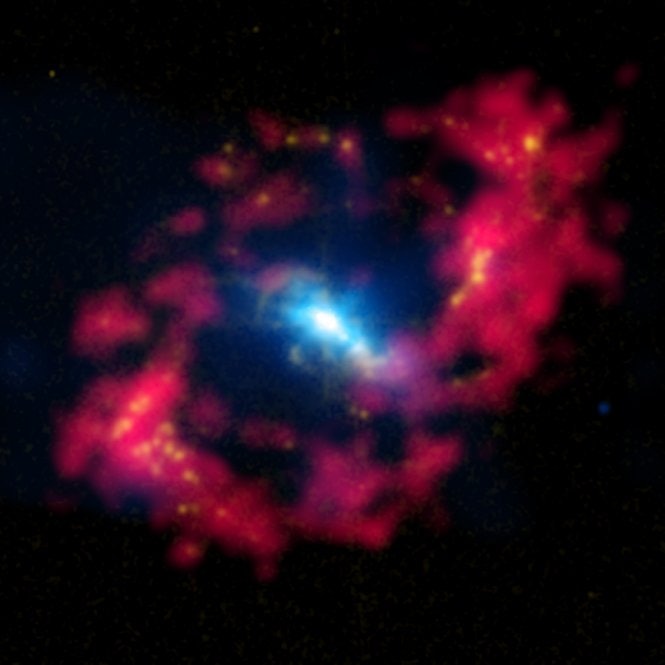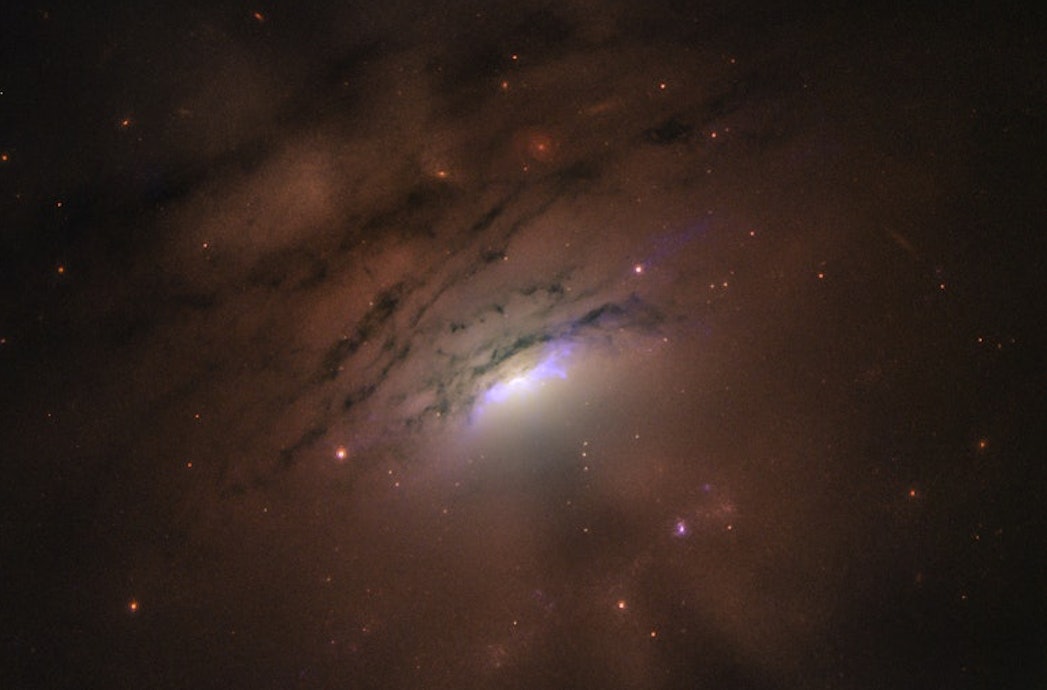
How much does a black hole weigh? The James Webb Space Telescope is about to find out.
After the James Webb Space Telescope’s first images go live next month, it will finally be time for the observatory to start doing real science. One of Webb’s first goals will be to help astronomers “weigh” the supermassive black hole at the heart of the nearby spiral galaxy NGC 4151 — also known as the Eye of Sauron for its resemblance to an iconic malevolent presence in the Lord of the Rings trilogy.
Webb’s Near InfraRed Spectrograph (NIRSpec) instrument will measure how quickly the NGC 4151 galaxy’s innermost stars orbit the galaxy’s center. That information will help astrophysicists calculate the mass of the black hole, because the faster the stars orbit, the more massive the black hole is.
The big idea — To track the stars, NIRSpec will have to see their light against the overwhelmingly bright background of the black hole’s accretion disk. As matter falls toward the black hole, it gets hotter and brighter; an actively “feeding” black hole like the one in the pupil of Sauron’s eye is one of the brightest things in the universe. Against that blazing background, it’s hard to pick out mere starlight — but Webb’s vision is sharp enough for the job.
However, even Webb’s powerful instruments won’t be able to track individual stars because NGC 4151 is so far away (about 19 megaparsecs). Instead, its NIRSpec instrument will track “blurred together groups of stars and their combined motions,” principal investigator Misty Bentz, of Georgia State University, tells Inverse.
She and her team are building a computer model in which tens of thousands of simulated stars orbit a supermassive black hole at their center. They’ll change the mass of the black hole in the model until the simulated stars’ orbits closely match the real-world data from Webb.
Here’s the background — GC 4151’s black hole is an active one, still growing by pulling more material into itself. And a black hole’s mass determines how it “feeds” on surrounding gas, how it affects nearby star formation, and thus how the whole galaxy evolves around it.
“Black holes are messy eaters, so when they are accreting or eating, they are also throwing material and energy back into the galaxy,” Bentz says. “This slows down the growth of the galaxy and ends up slowing down black hole growth as well, since it eventually cuts off their fuel supply.”

That’s why studying active black holes is so important, and NGC 4151 is one of the closest galaxies with an actively growing supermassive black hole at its center. Astronomers nicknamed the galaxy the Eye of Sauron because its central region looks like the baleful eye of the evil ruler of Mordor in the Lord of the Rings trilogy. It’s easiest to notice in false-color images, where radio emissions from clumps of hydrogen gas stand out in fiery red. And once you see it, you can’t unsee it.
Webb will bravely look Sauron in the eye with its NIRSpec instrument, which is about the size of a shoebox but contains nearly 100 precisely crafted mirrors. Those mirrors capture light from every source in an image, then split the light into the individual wavelengths that make it up. That spectrum of wavelengths holds information about an object’s chemical composition, as well as how it moves relative to the telescope. With a single image, NIRSpec can produce about 1,000 spectra.
Why it matters — Accurate masses for supermassive black holes like NGC 4151’s will help astronomers build more accurate models of how galaxies form and evolve — which is one of Webb’s four main science themes.
To help get there, Bentz and her team will compare the results of their Webb measurements with the results of another black hole “weighing” technique called echo mapping.
As gas falls into a black hole, it releases energy, causing the accretion disc to flare brighter. That flash may be "echoed" in another area of the gas as energy moves through the disk.
"The time between a flash and its echo tells us the distance between those two regions of gas. It’s a bit like seeing a flash of lightning and determining how far away is the storm by counting the seconds before you hear thunder," explains Bentz. “The structure of the gas combined with the speed at which it is moving around the black hole, which we can determine from Doppler shifts, tells us the gravitational force of the black hole and thus its mass.”
Comparing the results of the two methods will help Bentz and her colleagues make sure their mass estimate for NGC 4151’s black hole is accurate. The comparison will also help them refine the calculations they use for echo mapping. That's helpful for astrophysicists because they use echo mapping to study the centers of galaxies too distant from us to image in any detail — millions or billions of light years away.

“It became clear that carefully checking the black hole mass techniques (all of them, not just reverberation mapping) was an important detail that hadn’t received a lot of attention," said Bentz. "It’s a very hard problem because each technique can only be used in certain situations and there are just not many galaxies that exist where we can use both of these techniques to study their black holes. The JWST observations will provide an important piece of the puzzle.”
What’s next — The study is part of a program called Director’s Discretionary Early Release Science, whose goal is to let astronomers test Webb’s science capabilities and figure out exactly how to make the best use of the telescope and its powerful instruments while also doing real science. It’s a step forward from the early release observations, which will demonstrate the kind of images and data Webb can produce, but aren’t aimed at answering specific science questions.
Bentz and her team hope their work will help later researchers make the most of Webb. Meanwhile, they hope to request more of the space telescope’s time for further studies.
“We are hoping that the JWST data will provide a marked improvement over data that we can collect with ground-based observatories like Gemini, and if that is true, then there are some other galaxies that we would like to study in the same way as NGC 4151,” she says.







